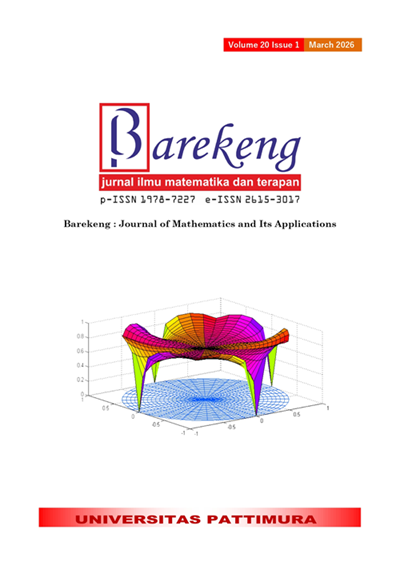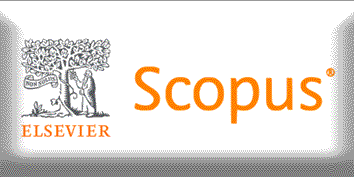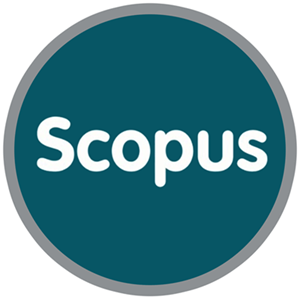PERFORMANCE EVALUATION OF SEASONAL ARIMA-SVR AND SEASONAL ARIMAX-SVR HYBRID METHODS ON FORECASTING PADDY PRODUCTION
Abstract
This study explores advances in forecasting time series data by combining linear and non-linear models. Traditional methods such as ARIMA and its variant ARIMAX are effective for linear data but have limitations when dealing with non-linearity. Support Vector Regression (SVR), a non-linear method, complements these weaknesses. Hybrid models such as ARIMA-SVR and ARIMAX-SVR synergize ARIMA or ARIMAX for linear components and SVR for non-linear components, improving accuracy. The purpose of this study is to evaluate the performance of hybrid ARIMA-SVR and ARIMAX-SVR methods on Indonesian paddy production data. The data analyzed is national-level data per sub-round (i.e., three sub-rounds per year) from sub-round 1 (January-April) of 1992 to sub-round 3 (September-December) of 2024, obtained from the Indonesian Central Statistics Agency and the Indonesian Ministry of Agriculture.Forecasting accuracy is measured using Root Mean Square Error (RMSE) and Mean Absolute Percentage Error (MAPE). The results show that the best model is the Seasonal ARIMAX (1,1,1)(0,1,1)[3]-SVR ( 0.05) hybrid model, with the smallest RMSE and MAPE values of 0.304 and 1.473%. The addition of the harvested area variable and the ASF dummy improved the accuracy of the ARIMAX model prediction, while the application of SVR to ARIMAX residuals successfully captured previously undetected linear patterns. Based on these considerations, the Seasonal ARIMAX(1,1,1)(0,1,1)[3]-SVR ( 0.05) hybrid model was selected as the model with the best performance.
Downloads
References
G. Chitikela et al., “ARTIFICIAL-INTELLIGENCE-BASED TIME-SERIES INTERVENTION MODELS TO ASSESS THE IMPACT OF THE COVID-19 PANDEMIC ON TOMATO SUPPLY AND PRICES IN HYDERABAD, INDIA,” Agronomy, vol. 11, no. 9, Sep. 2021, doi: https://doi.org/10.3390/agronomy11091878.
A. Kurnia and I. Made Sumertajaya, “ANALISIS INFLASI MENGGUNAKAN DATA GOOGLE TRENDS DENGAN MODEL ARIMAX DI DKI JAKARTA *,” 2020.
K. Li, Y. Liang, J. Li, M. Liu, Y. Feng, and Y. Shao, “INTERNET SEARCH DATA COULD BE USED AS NOVEL INDICATOR FOR ASSESSING COVID-19 EPIDEMIC,” Infect Dis Model, vol. 5, 2020, doi: https://doi.org/10.1016/j.idm.2020.10.001.
M. R. Susila, “PENGARUH HARI RAYA IDUL FITRI TERHADAP INFLASI DI INDONESIA DENGAN PENDEKATAN ARIMAX (VARIASI KALENDER),” BAREKENG: Jurnal Ilmu Matematika dan Terapan, vol. 14, no. 3, 2020, doi: https://doi.org/10.30598/barekengvol14iss3pp369-378.
M. Aprilianto, M. N. S. Hasibuan, and S. Z. Harahap, “FORECASTING HEALTH SECTOR STOCK PRICES USING ARIMAX METHOD,” Sinkron, vol. 7, no. 2, 2022, doi: https://doi.org/10.33395/sinkron.v7i2.11418.
D. I. Purnama, “PERAMALAN HARGA EMAS SAAT PANDEMI COVID-19 MENGGUNAKAN MODEL HYBRID AUTOREGRESSIVE INTEGRATED MOVING AVERAGE - SUPPORT VECTOR REGRESSION,” Jambura Journal of Mathematics, vol. 3, no. 1, pp. 52–65, Jan. 2021, doi: https://doi.org/10.34312/jjom.v3i1.8430.
Y. Pan, X. Jin, Y. Li, D. Chen, and J. Zhou, “A STUDY ON THE PREDICTION OF BOOK BORROWING BASED ON ARIMA-SVR MODEL,” in Procedia CIRP, Elsevier B.V., 2021, pp. 93–102. doi: https://doi.org/10.1016/j.procs.2021.05.057.
L. Rubio and K. Alba, “FORECASTING SELECTED COLOMBIAN SHARES USING A HYBRID ARIMA-SVR MODEL,” Mathematics, vol. 10, no. 13, Jul. 2022, doi: https://doi.org/10.3390/math10132181.
H. F. Chow, “SHORT-TERM ELECTRICITY GRID MAXIMUM DEMAND FORECASTING WITH THE ARIMAX-SVR MACHINE LEARNING HYBRID MODEL,” HKIE Transactions Hong Kong Institution of Engineers, vol. 28, no. 1, 2021, doi: https://doi.org/10.33430/V28N1THIE-2020-0005.
Badan Pusat Statistik, “LUAS PANEN DAN PRODUKSI PADI DI INDONESIA 2021 (ANGKA TETAP),” Bps, vol. 2021, no. 21, 2022.
BPS-Statistics Indonesia, “PADDY HARVESTED AREA AND PRODUCTION IN INDONESIA 2024 (FINAL FIGURES)”. Official Statistics News, No. 15/02/Th. XXVIII, 2025.
M. A. P. Munasingha and N. A. D. N. Napagoda, “TREND ANALYSIS AND FORECASTING FOR PADDY PRODUCTION IN SRI LANKA,” Applied Economics & Business, vol. 5, no. 2, 2021, doi: 10.4038/aeb.v5i2.33.
N. Nurviana, A. Amelia, R. P. S. Riezky Purnama Sari, U. N. Ulya Nabilla, and T. Talib, “FORECASTING RICE PADDY PRODUCTION IN ACEH USING ARIMA AND EXPONENTIAL SMOOTHING MODELS,” CAUCHY: Jurnal Matematika Murni dan Aplikasi, vol. 7, no. 2, 2022, doi: https://doi.org/10.18860/ca.v7i2.13701.
A. Andita and W. Sulistijanti, “PERBAIKAN PERAMALAN PRODUKSI PADI DI KABUPATEN KENDAL DENGAN MENGGUNAKAN METODE SUPPORT VECTOR MACHINE (SVM),” Proceeding of The URECOL, 2018.
A. Asrirawan, S. U. Permata, and M. I. Fauzan, “PENDEKATAN UNIVARIATE TIME SERIES MODELLING UNTUK PREDIKSI KUARTALAN PERTUMBUHAN EKONOMI INDONESIA PASCA VAKSINASI COVID-19,” Jambura Journal of Mathematics, vol. 4, no. 1, pp. 86–103, Jan. 2022, doi: https://doi.org/10.34312/jjom.v4i1.11717.
D. C. Montgomery, C. L. Jennings, and M. Kulahci, “INTRODUCTION TO TIME SERIES ANALYSIS AND FORECASTING,” Wiley Series in Probability and Statistics, 2015.
M. L. S. Putera, “IMPROVISASI MODEL ARIMAX-ANFIS DENGAN VARIASI KALENDER UNTUK PREDIKSI TOTAL TRANSAKSI NON-TUNAI,” Indonesian Journal of Statistics and Its Applications, vol. 4, no. 2, 2020, doi: https://doi.org/10.29244/ijsa.v4i2.603.
Y. P. Chen et al., “MODELING AND PREDICTING PULMONARY TUBERCULOSIS INCIDENCE AND ITS ASSOCIATION WITH AIR POLLUTION AND METEOROLOGICAL FACTORS USING AN ARIMAX MODEL: AN ECOLOGICAL STUDY IN NINGBO OF CHINA,” Int J Environ Res Public Health, vol. 19, no. 9, 2022, doi: https://doi.org/10.3390/ijerph19095385.
N. Puspita, F. Mochamad Afendi, and B. Sartono, “COMPARISON OF SARIMA, SVR, AND GA-SVR METHODS FOR FORECASTING THE NUMBER OF RAINY DAYS IN BENGKULU CITY,” BAREKENG: J. Il. Mat. & Ter, vol. 16, no. 1, pp. 355–362, 2022, doi: https://doi.org/10.30598/barekengvol16iss1pp353-360.
J. J. Zou, G. F. Jiang, X. X. Xie, J. Huang, X. B. Yang, and M. Lu, “APPLICATION OF A COMBINED MODEL WITH SEASONAL AUTOREGRESSIVE INTEGRATED MOVING AVERAGE AND SUPPORT VECTOR REGRESSION IN FORECASTING HAND-FOOT-MOUTH DISEASE INCIDENCE IN WUHAN, CHINA,” Medicine (United States), vol. 98, no. 6, Feb. 2019, doi: https://doi.org/10.1097/MD.0000000000014195.
D. I. Purnama and S. Setianingsih, “SUPPORT VECTOR REGRESSION (SVR) MODEL FOR FORECASTING NUMBER OF PASSENGERS ON DOMESTIC FLIGHTS AT SULTAN HASANUDIN AIRPORT MAKASSAR,” Jurnal Matematika, Statistika dan Komputasi, vol. 16, no. 3, 2020, doi: https://doi.org/10.20956/jmsk.v16i3.9176.
P. Pakrooh and E. Pishbahar, “FORECASTING AIR POLLUTION CONCENTRATIONS IN IRAN, USING A HYBRID MODEL,” Pollution, vol. 5, no. 4, pp. 739–747, 2019, doi: 10.22059/poll.2019.274827.572.
F. Islam and M. Alam, “USE OF TELECONNECTIONS TO PREDICT WESTERN AUSTRALIAN SEASONAL RAINFALL USING ARIMAX MODEL,” Hydrology, vol. 7, no. 3, 2020, doi: https://doi.org/10.3390/hydrology7030052.
Copyright (c) 2025 I'lmisukma Risnawati, Farit Mochamad Afendi, I Made Sumertajaya

This work is licensed under a Creative Commons Attribution-ShareAlike 4.0 International License.
Authors who publish with this Journal agree to the following terms:
- Author retain copyright and grant the journal right of first publication with the work simultaneously licensed under a creative commons attribution license that allow others to share the work within an acknowledgement of the work’s authorship and initial publication of this journal.
- Authors are able to enter into separate, additional contractual arrangement for the non-exclusive distribution of the journal’s published version of the work (e.g. acknowledgement of its initial publication in this journal).
- Authors are permitted and encouraged to post their work online (e.g. in institutional repositories or on their websites) prior to and during the submission process, as it can lead to productive exchanges, as well as earlier and greater citation of published works.






1.gif)



